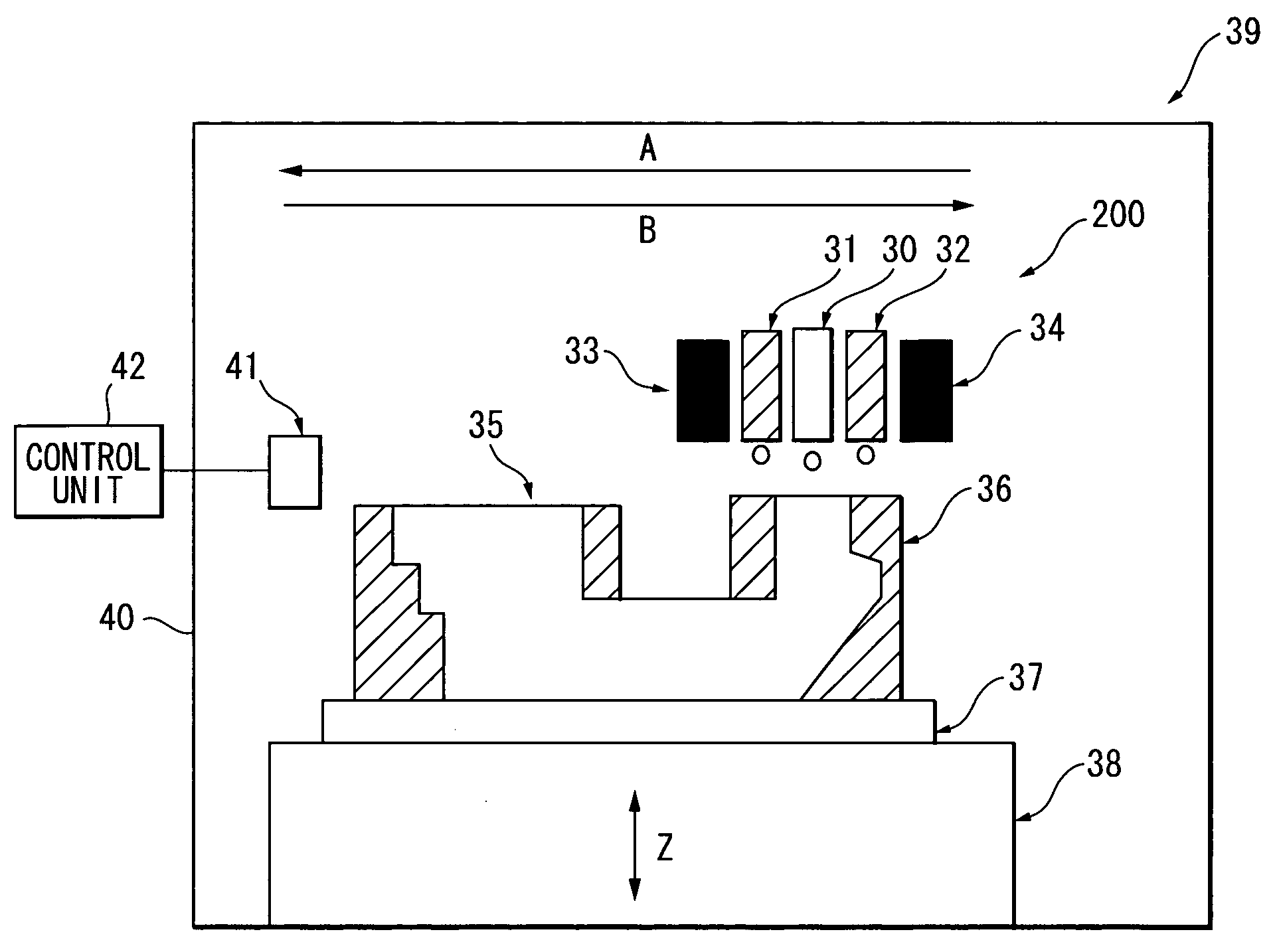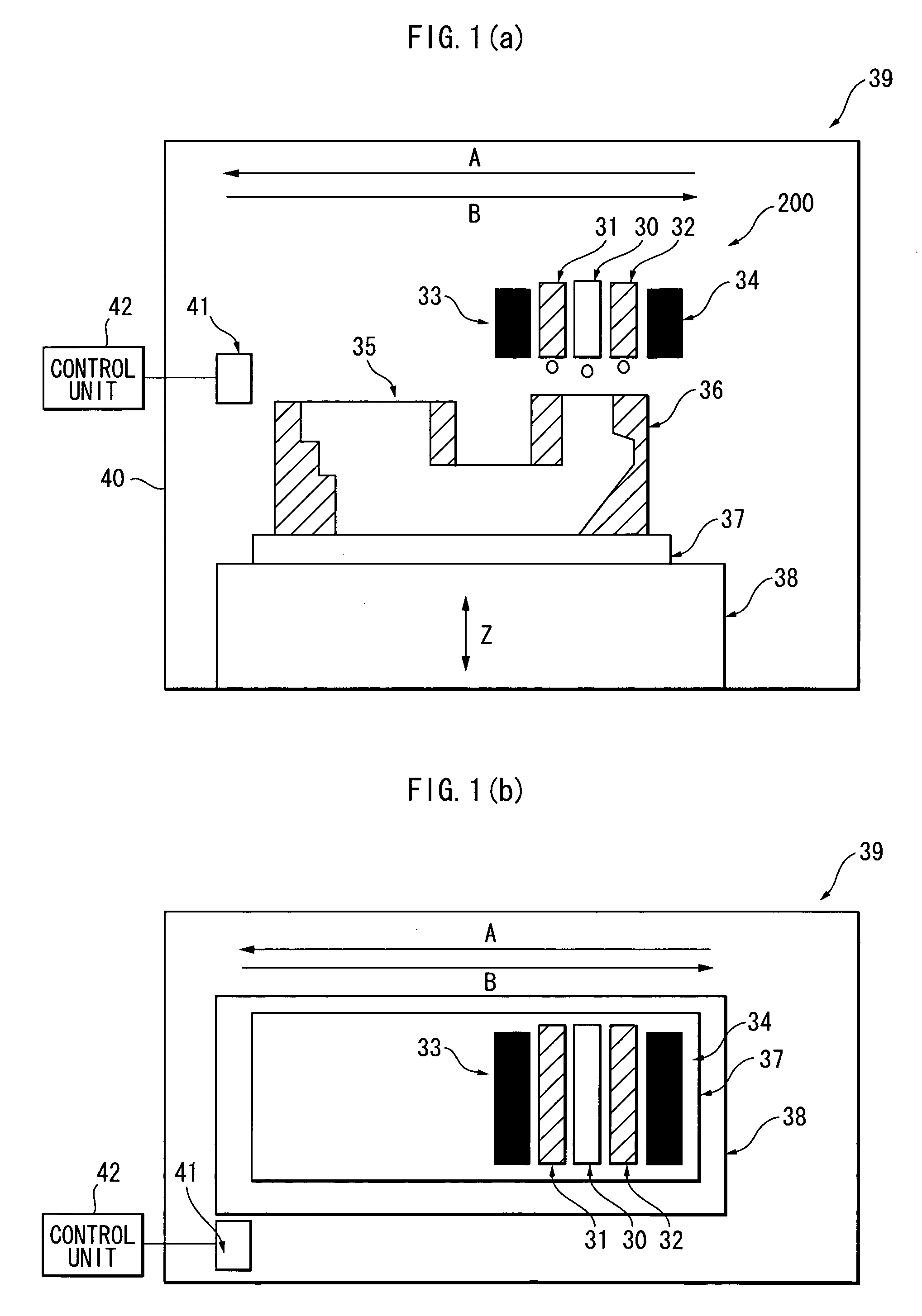Support material for three-dimensional laminating molding
a technology of support material and three-dimensional laminating, which is applied in the direction of additive manufacturing processes, manufacturing tools, electric/magnetic/electromagnetic heating, etc., can solve the problems of increasing the start-up time of the device and the electric power consumption of the device when driving the device, and achieves high speed, high precision, and increased device start-up time.
- Summary
- Abstract
- Description
- Claims
- Application Information
AI Technical Summary
Benefits of technology
Problems solved by technology
Method used
Image
Examples
experiment 1
[0125] Experiment 1
[0126] A total of 300 g containing 10 parts by weight of urethane acrylate (trade name: DIABEAM UK6038, available from Mitsubishi Rayon Co., Ltd.) and 90 parts by weight of neopentyl glycol hydroxypivalate ester di(meth)acrylate (trade name: KAYARAD MANDA, available from Nippon Kayaku Co., Ltd.) as a mold material, 3 parts by weight of a photo-polymerization initiator (trade name: IRGACURE 1700, available from Ciba Specialty Chemicals), and 2 parts by weight of a blue pigment (trade name: Lionel Blue 7400G, available from TOYO INK MFG. CO., LTD.) as a colorant was dispersed until a uniform mixture was obtained using a homogenizer (trade name: HG30, manufactured by Hitachi Koki Co., Ltd.) at a stirring speed of 2,000 rpm. Successively, the resultant mixture was passed through a filter to remove impurities or the like, thereby obtaining a uniform ink composition for a mold (mold material).
[0127] A total of 300 g containing 100 parts by weight of hydrogenated palm o...
second experiment
[0138] Second Experiment
[0139] A total of 300 g containing 90 parts by weight of hydrogenated palm oil fatty triglyceride which is hydrogenated animal or vegetable oil or fat, RIKEMAL VT (MITI No. 8-358, available from Riken Vitamin Co., Ltd.) and 10 parts by weight of Kawaslip SA (available from Kawaken Fine Chemicals Co., Ltd.), both as support materials, and 3 parts by weight of a black pigment (MA77) was dispersed in the same manner as in the first experiment until a homogeneous mixture was obtained using a homogenizer (HG30, manufactured by Hitachi Koki Co., Ltd.) at a stirring speed of 2,000 rpm. Successively, filtration was carried out to remove impurities or the like, to thereby obtain a homogeneous ink composition for a support (support material). The composition had a melting point of 65 to 68° C. The support material in the second experiment had a density of 961.5 kg / m3 at 20° C., a density of 854.3 kg / m3 at the ejection temperature, and thus, a density ratio of 11.1%.
[0...
ninth experiment
[0154] Ninth Experiment
[0155] A total of 300 g containing 50 parts by weight of myristyl myristate, Crodamol MM (MITI No. 9-1382, available from Croda Japan K.K.) and 50 parts by weight of Kawaslip SA (available from Kawaken Fine Chemicals Co., Ltd.), both as support materials, and 3 parts by weight of a black pigment (MA77) as a colorant was dispersed in the same manner as in the first experiment until a uniform mixture was obtained using a homogenizer (HG30, manufactured by Hitachi Koki Co., Ltd.) at a stirring speed of 2,000 rpm. Successively, filtration was carried out to remove impurities or the like, to thereby obtain a uniform ink composition for a support (support material.
[0156] The support material had a melting point of 62 to 68° C. and a density ratio of 13.5%.
[0157] Mold formation was carried out by: using the same mold material as that in the first experiment and the molding device 39A shown in FIG. 6; and curing the mold material through irradiation using an ultravi...
PUM
| Property | Measurement | Unit |
|---|---|---|
| Temperature | aaaaa | aaaaa |
| Temperature | aaaaa | aaaaa |
| Fraction | aaaaa | aaaaa |
Abstract
Description
Claims
Application Information
 Login to View More
Login to View More - R&D
- Intellectual Property
- Life Sciences
- Materials
- Tech Scout
- Unparalleled Data Quality
- Higher Quality Content
- 60% Fewer Hallucinations
Browse by: Latest US Patents, China's latest patents, Technical Efficacy Thesaurus, Application Domain, Technology Topic, Popular Technical Reports.
© 2025 PatSnap. All rights reserved.Legal|Privacy policy|Modern Slavery Act Transparency Statement|Sitemap|About US| Contact US: help@patsnap.com



